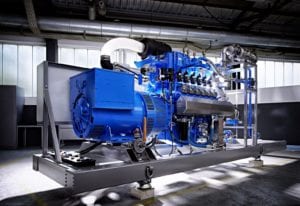Southern Africa has seen a major move toward renewable energy, however there is a huge untapped natural gas energy potential in the region.
The southern African region is becoming a key player in the international trend towards the development of renewable energy sources. A joint report by REN21 and UNIDO finds that renewables now account for 23.5% of the region’s generation capacity. SADC countries aim to increase renewable energy contribution to electricity supply to 27% by 2020 and 29% by 2030. In the face of this renewable drive, HP van Huyssteen, project manager at Energas Technologies, is of the view that there is massive untapped natural gas energy potential in the region. “Responsible utilisation of this ancient fuel may help reduce the acute energy deficit faced by southern African counties. Considering the damaging environmental effects caused by the burning of fossil fuels, natural gas may be one of the most appropriate transitional fuels in the drive towards a truly renewable energy landscape,” says Van Huyssteen. He argues that natural gas is the cleanest burning fossil fuel and releases up to 50% less carbon dioxide (CO₂) than coal, when used for power generation. Van Huyssteen says the absence of large-scale gas infrastructure in the region is in itself a hindrance to further development. “If gas availability across the region was more widespread, the demand for it would certainly have been higher.” He reasons that one way to get the ball rolling is to build anchor “gas-to-power” projects that can justify the necessary infrastructure developments, which will in turn promote further expansion. It is promising that the energy policymakers of the region, recently, at the SADC Ministers meeting held in Sandton, strongly endorsed natural gas as part of the energy mix. By the August 2018 meeting, a report should illuminate SADC’s trajectory as far as the development of the region’s gas resources is concerned.Relooking the energy mix
Coal is still the backbone of power generation in the region, thanks to its abundance and low cost. However, increasing environmental and climate change concerns may preclude this energy source in the not too distant future. Access to electricity in southern Africa may be as low as 42%, according to the SADC Energy Monitor 2016, which further reports that biomass usage – such as burning wood and charcoal – account for more than 45% of the total regional energy consumption. Van Huyssteen reasons that natural gas, particularly liquefied natural gas (LNG), may be particularly a far better means of supplying these remote communities with electricity and heat (distributed on-site generation).“LNG is easy to transport by rail, road or sea and can be used as an electricity feedstock in such cases. Electricity or heat from gas is available on demand and it can be started and stopped far easier than wood or coal fires,” he says.
He adds that gas-to-power installations can be small enough to make economic sense for small communities, and are easily scalable when demand grows.







